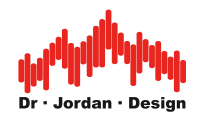The concept of speech intelligibility has gained enormous importance in recent years.
Speech intelligibility refers to a person's ability to understand spoken language. High speech intelligibility means that a person is able to hear words and phrases and recognize and understand them quickly and correctly.
On the one hand, speech intelligibility is important for room acoustics, and this is often about optimizing conference rooms. On the other hand, speech intelligibility for emergency warning systems and announcement systems is safety-critical.
The most important method for objectively measuring speech intelligibility is standardized in the IEC/DIN60268-16. This standard describes procedures for determining speech intelligibility STI as a single value using various test signals.
Two methods are described in the IEC/DIN60268-16 standard.
- the direct method. Speech intelligibility is determined from the modulation loss of a specific noise signal.
- the indirect method. First of all, the room impulse response is determined and from this the speech intelligibility.
These measurement methods for determining speech intelligibility are integrated into our Akulap software. You can also find these methods in handheld devices NTI XL2 or the Bedrock SM50
We also offer a library that allows software vendors to integrate speech intelligibility into their products.
Properties of the library for determining speech intelligibility according to DIN/IEC 60268-16 ED5.0
- Portable C++ code
- no dependency on other libraries
- We own all rights to this library. No open source projects are used.
features
- STI / STIPA according to DIN/IEC 60268-16 ED5.0
- Auditory masking
- Recalculation with background noise
scope of delivery
- Library (.dll/.lib) other operating systems on request.
- header files
- Example programs as source code
- test vectors
You will find the conformance test for IEC60268-16 ED5 here.
We offer this library in flexible licensing models.
.png)


